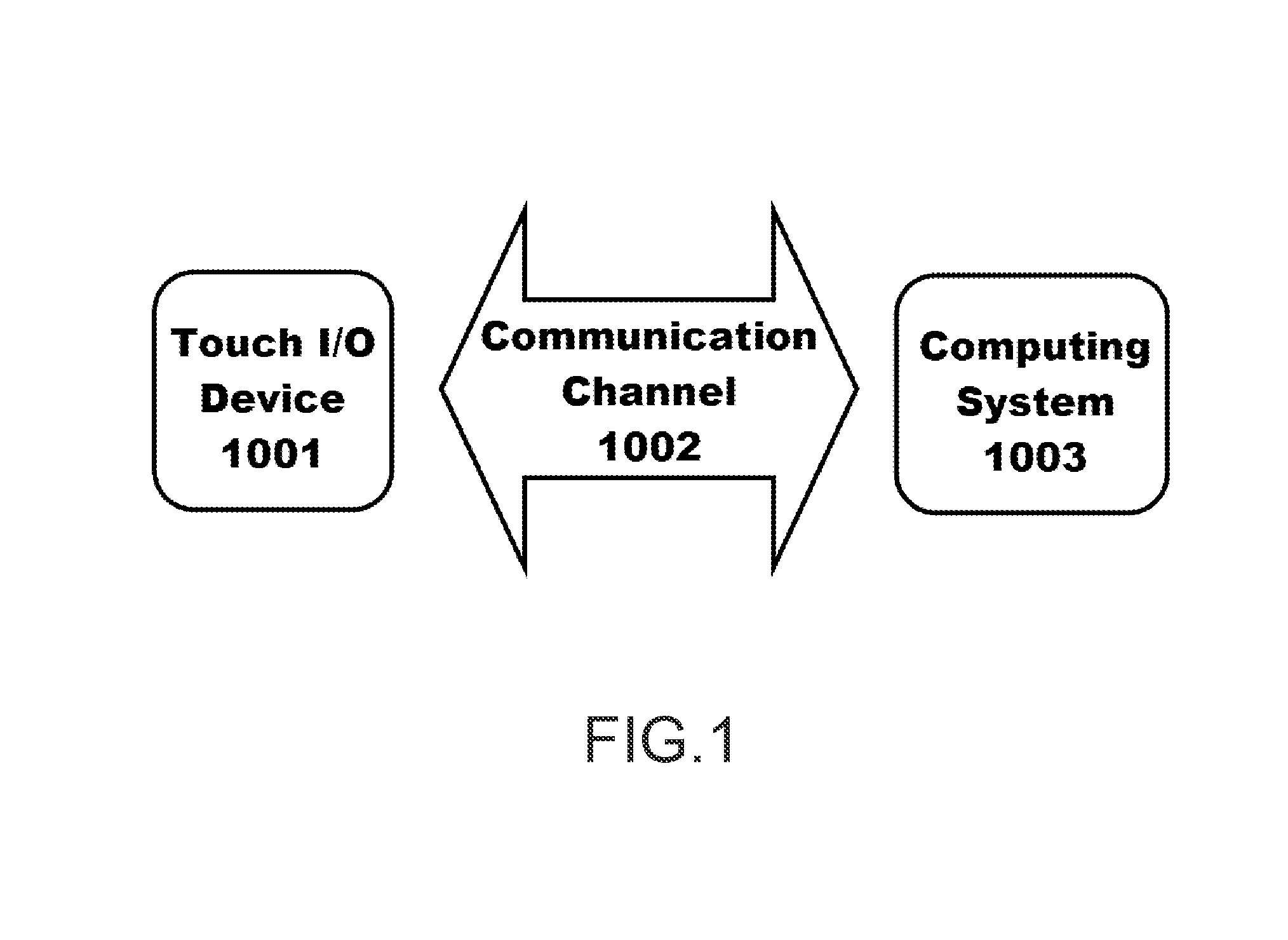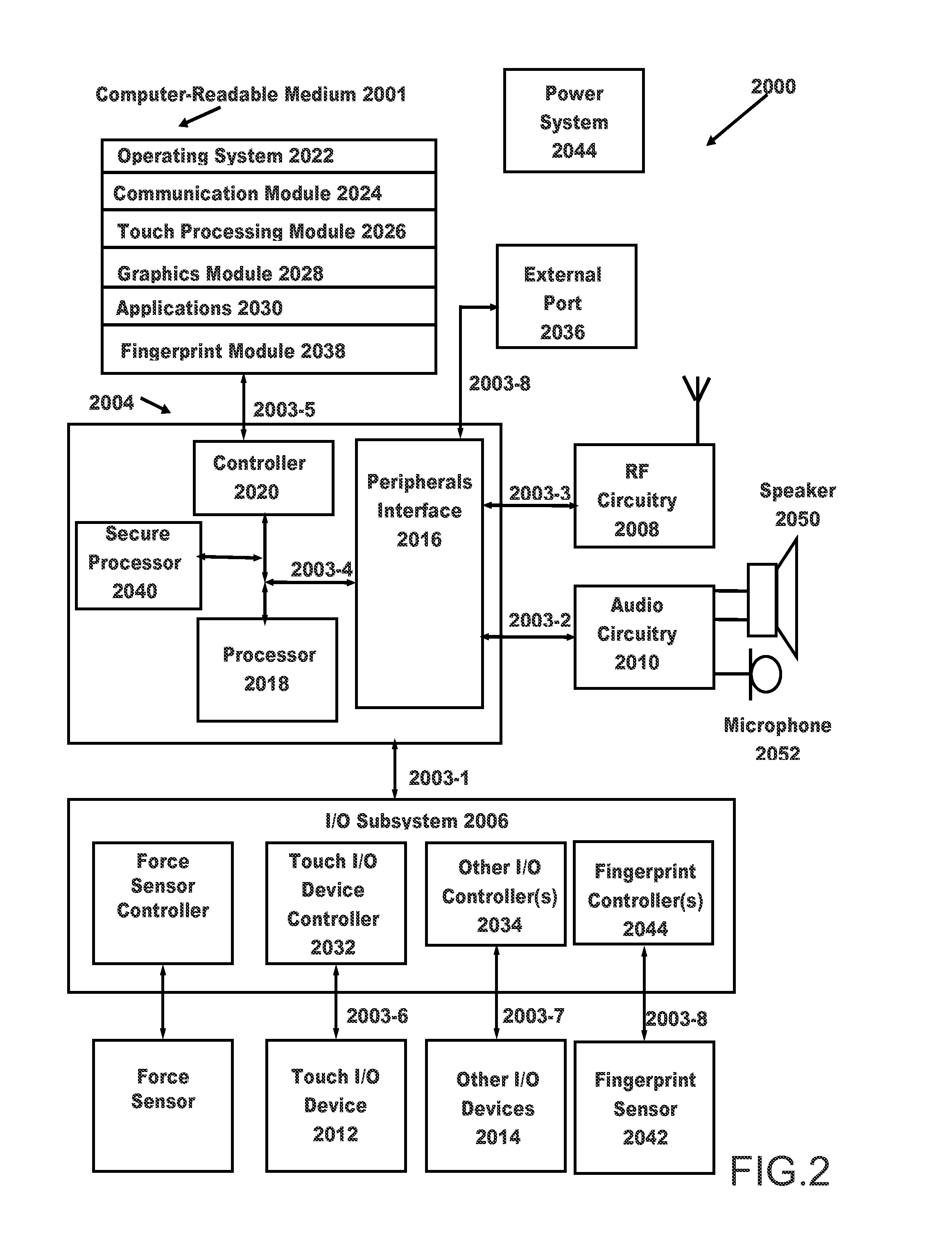Frustrated Total Internal Reflection and Capacitive Sensing
a capacitive sensing and total internal reflection technology, applied in the field of force sensing, can solve the problems of inability to provide functions to touch devices, inability to accurately determine the area of users, and inability to provide functions to applications. the effect of accurate determination
- Summary
- Abstract
- Description
- Claims
- Application Information
AI Technical Summary
Benefits of technology
Problems solved by technology
Method used
Image
Examples
Embodiment Construction
Terminology
[0025]The following terminology is exemplary, and not intended to be limiting in any way.
[0026]The text “applied force”, and variants thereof, generally refers to a degree or measure of an amount of force being applied to a device. The degree or measure of applied force need not have any particular scale. For example, the measure of applied force can be linear, logarithmic, or otherwise nonlinear, and can be adjusted periodically (or otherwise, such as aperiodically, or otherwise from time to time) in response to one or more factors, either relating to applied force, location of touch, time, or otherwise.
[0027]The text “attenuated reflection”, and variants thereof, generally refers to a degree or measure of reflection less than 100% reflection, such as might occur at an interface where reflection of a transmitted signal is less than 100% reflection. For a first example, attenuated reflection can occur if the interface between two elements does not provide for 100% reflect...
PUM
 Login to View More
Login to View More Abstract
Description
Claims
Application Information
 Login to View More
Login to View More - R&D
- Intellectual Property
- Life Sciences
- Materials
- Tech Scout
- Unparalleled Data Quality
- Higher Quality Content
- 60% Fewer Hallucinations
Browse by: Latest US Patents, China's latest patents, Technical Efficacy Thesaurus, Application Domain, Technology Topic, Popular Technical Reports.
© 2025 PatSnap. All rights reserved.Legal|Privacy policy|Modern Slavery Act Transparency Statement|Sitemap|About US| Contact US: help@patsnap.com



